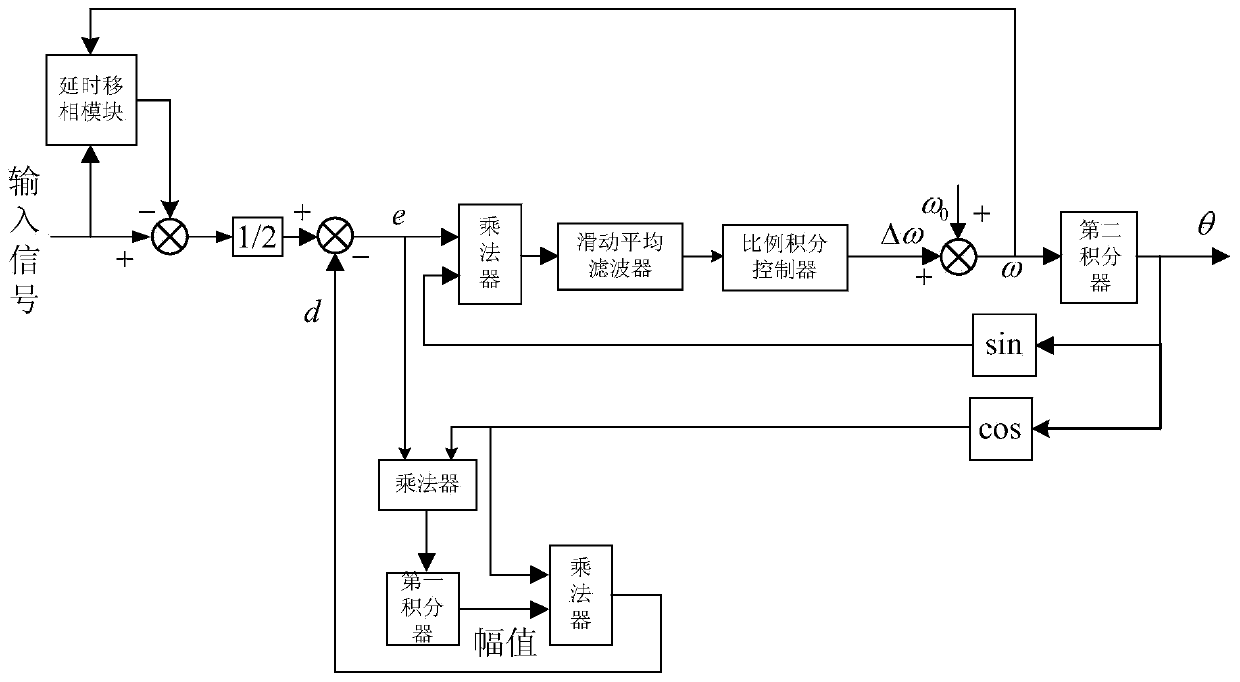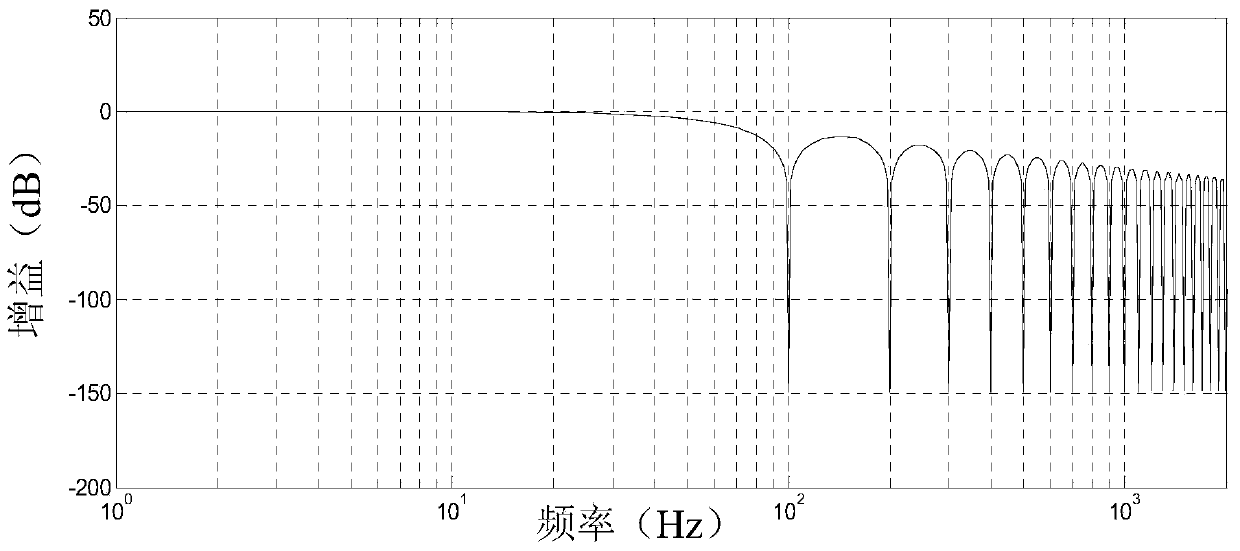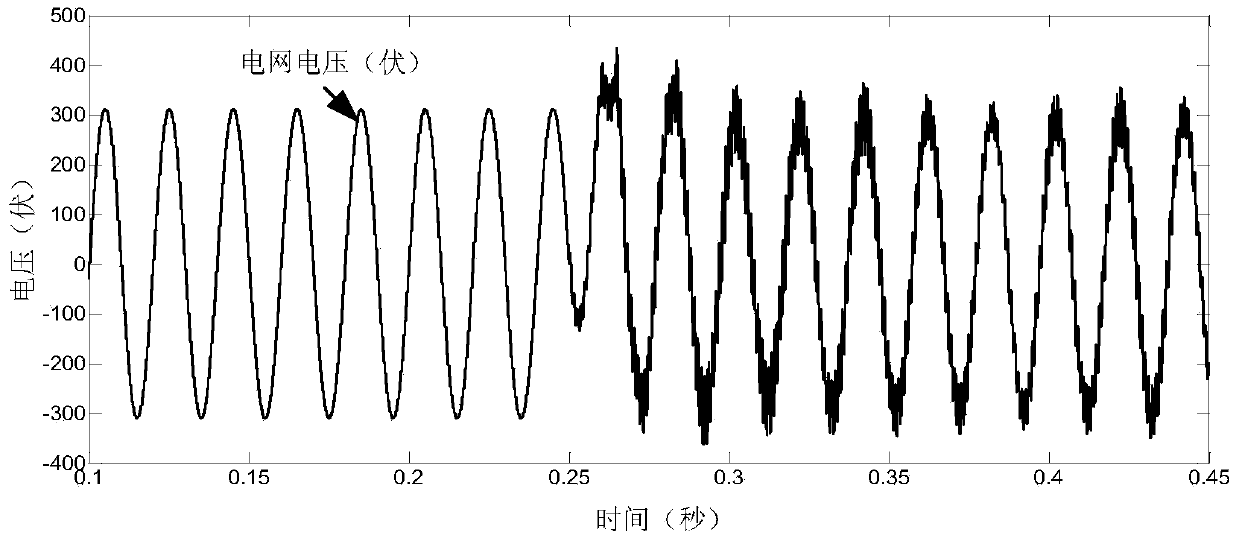Method for network voltage amplitude, frequency and phase angle detection based on one-phase phase-locked loop algorithm
A grid voltage, phase-locked loop technology, applied in multi-tester circuits and other directions, can solve the problem of inability to obtain grid voltage phase angle, frequency and amplitude information, etc., to eliminate DC offset, avoid influence, and eliminate odd harmonics. wave effect
- Summary
- Abstract
- Description
- Claims
- Application Information
AI Technical Summary
Problems solved by technology
Method used
Image
Examples
specific Embodiment approach 1
[0021] Specific implementation mode one: combine figure 1 Illustrate the present embodiment, the method for detecting grid voltage amplitude, frequency and phase angle based on the single-phase phase-locked loop algorithm described in the present embodiment, it comprises the following steps:
[0022] Step 1: Collect the grid voltage signal and input it to the delay phase shifting module. The delay phase shifting module simultaneously receives the frequency value of the grid voltage obtained in the previous cycle, and the delay phase shifting module outputs the delay of the grid voltage signal, the collected grid voltage signal is subtracted from the delay signal of the grid voltage, and the obtained result is divided by 2 to obtain a grid voltage signal without DC offset;
[0023] Step 2: Use the grid voltage signal without DC offset obtained in step 1 as the input signal of the enhanced phase-locked loop to obtain the amplitude of the grid voltage in this cycle, the frequency...
specific Embodiment approach 2
[0036] Specific embodiment 2: This embodiment is a further limitation of the method for detecting grid voltage amplitude, frequency and phase angle based on the single-phase phase-locked loop algorithm described in specific embodiment 1. In the step 2, the step 1 is obtained The grid voltage signal without DC offset is used as the input signal of the enhanced phase-locked loop, and the method of obtaining the amplitude of the grid voltage of this cycle, the frequency value of the grid voltage of this cycle and the phase angle value of the grid voltage of this cycle is as follows:
[0037] Step A1: Multiply the magnitude of the grid voltage obtained in the previous cycle by the cosine value of the phase angle of the grid voltage obtained in the previous cycle to obtain a signal d, and subtract the grid voltage signal obtained in step 1 without DC offset from the Signal d, to obtain the phase-locked error e of the grid voltage signal;
[0038] Step B1: Multiply the phase-lock er...
specific Embodiment approach 3
[0041] Specific embodiment three: this embodiment is a further limitation of the method for detecting grid voltage amplitude, frequency and phase angle based on the single-phase phase-locked loop algorithm described in specific embodiment one, and step one is obtained in step two The grid voltage signal without DC offset is used as the input signal of the enhanced phase-locked loop, and the method of obtaining the amplitude of the grid voltage of this cycle, the frequency value of the grid voltage of this cycle and the phase angle value of the grid voltage of this cycle is as follows:
[0042] Step A2: Multiply the magnitude of the grid voltage obtained in the previous cycle by the cosine value of the phase angle of the grid voltage obtained in the previous cycle to obtain a signal d, and subtract the grid voltage signal obtained in step 1 without DC offset from the Signal d, to obtain the phase-locked error e of the grid voltage signal;
[0043] Step B2: Multiply the phase-lo...
PUM
 Login to View More
Login to View More Abstract
Description
Claims
Application Information
 Login to View More
Login to View More - R&D
- Intellectual Property
- Life Sciences
- Materials
- Tech Scout
- Unparalleled Data Quality
- Higher Quality Content
- 60% Fewer Hallucinations
Browse by: Latest US Patents, China's latest patents, Technical Efficacy Thesaurus, Application Domain, Technology Topic, Popular Technical Reports.
© 2025 PatSnap. All rights reserved.Legal|Privacy policy|Modern Slavery Act Transparency Statement|Sitemap|About US| Contact US: help@patsnap.com



